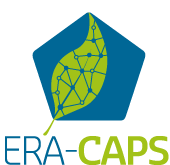BARley yield associated Network
- Acronym BARN
- Duration 36
-
Project leader
Dr. Nils Stein, Leibniz Institute Gatersleben, funded by DFG
-
Other project participants
Professor Dr. Gary J. Muehlbauer, University of Minnesota, funded by NSF (pending)
Professor Dr. Robbie Waugh, University of Dundee, funded by BBSRC
- Funding
- Total Granted budget
Abstract
Our goal is to identify and characterize novel barley genes that regulate yield, specifically those affecting seed, spike (the inflorescence) and tiller (seed bearing stems) traits. We have previously generated exome capture sequence data from a geo-referenced collection of 192 two-row landraces, revealing over 1.6 million SNP alleles (Russell et al., 2016). Here we plan to phenotype this germplasm collection for yield-related parameters with particular focus on seed, spike, and productive tiller traits. We will assess the same traits, in the same way at each partners location. The uniqueness of our approach lies in our proposal to add layers of transcriptome sequence data (six trait related tissues per genotype) and to analyse how gene expression relates to trait development. In plants, the power of the approach has recently been demonstrated in brassicas under the banner of Associative Transcriptomics (Harper et al., 2012) to identify genes controlling seed compositional traits. However in yeast and mammalian model organisms, chains of causality are now being identified that link SNPs to transcript abundance variation, to physiological transformation and ultimately risk of disease (Albert and Kruglyak, 2015). We propose that by using multiple tissue types we will take this form of analysis beyond the state-of-the-art, allowing deleterious SNPs in expressed sequences, patterns of transcript abundance, and expression networks to unravel complex yield-related genetic trait interactions. To enable accurate quantification of transcript read depth, we propose to develop a reference transcript dataset by using deep paired-end Illumina RNA-seq and PacBio ISO-seq data from the six tissues from cv. Morex (IBSC 2012). We will use this to quantify transcript abundance from RNA-seq data collected from the same six tissues sampled across the population. RNA-seq derived SNP alleles will supplement the exome capture SNPs and both these data and transcript read depth variation will be used for analysis of the yield-related traits. Gene co-expression networks will be constructed using the reference transcript dataset from Morex and the RNA-seq data from the six tissues sampled from the landrace collection. Both datasets will be integrated to identify candidate genes for key regulators of yield-related traits. Functional characterization of candidate genes will be initiated by identifying deleterious alleles from TILLING populations available in each of the three partner labs. The project will provide global community resources including: a reference transcript dataset, additional SNPs derived from the landrace collection, and gene co-expression networks for exploring key regulatory genes and their relationship to yield-related traits. We will gain an understanding of GxE interactions for key traits. Our approach is only feasible now due to the imminent barley genome release and the unique assembled and characterised germplasm available to the consortium.
